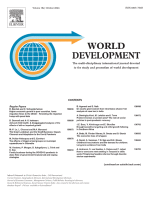
Lo más reciente
This study investigates the impact of Operation Orion on newborn health outcomes. While previous research has examined the adverse effects of conflict on child health, the specific consequences of state military operations on newborns, especially in urban settings, remain underexplored. Using a Difference-in-Differences design and administrative data from the Colombian Vital Statistics Reports, we assess the effects of Operation Orion on birth weight, height, prematurity, the likelihood of a high APGAR score, Small for Gestational Age (SGA), and prenatal visits. Our analysis shows a significant reduction in birth weight among infants born in intervention-affected neighborhoods, with the effects most pronounced among infants of married and less educated mothers. We also find a decrease in birth height and a lower probability of an APGAR score above 7, which is indicative of good health at birth. No significant effects are observed for the other outcomes. We discuss maternal stress as the primary mechanism underlying these findings. Our results contribute to a deeper understanding of the complex impacts of state military operations and highlight the need to consider contextual factors when evaluating their effects on local communities.
 Darwin Cortése,
Darwin Cortése, 